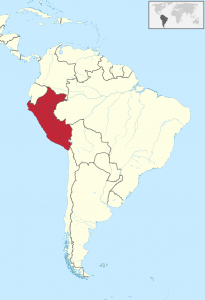Peru
Breathtaking landscape and the world famous Incas’ city: Machu Picchu. Undoubtedly it is worth to visit the country. But Peru is far more than a tourist destination. Seldom have so many opposites and extremes met in one country and seldom one can find such an indescribable diversity.
Geographically, the country is divided into three major regions: the coastal lowlands, the Andean highlands and the rainforest. The completely different climatic and topographical conditions characterize land and people.
Likewise, a story drawn by violence left its mark on the Peruvian political scene. Until the 1990s, guerrilla warfare against the government and cruel massacres against the civilian population occurred.
In recent years, this Andean country has gained political stability and is no longer considered as a developing country (middle income countries) because of the growth in per capita income.
But up to this day, social differences and unequal opportunities characterize people. In spite of the enormous economic growth, according to statistics, a quarter of the population live in poverty, around 2.9% make a living with less than USD 1.25 per day (2012). Social exclusion and discrimination mainly affect indigenous groups in the countryside and in urban poor areas.
The differences between city and country are enormous. Not least in the field of education. Although the government has been heavily engaged in the school system in recent years and the majority of children are being trained, there is still much to improve in the school system. About one fifth of the students do not complete the compulsory secondary school. There are several reasons for this. One of them is the quality and level of teaching, which must be questioned. Also, there is not only a lack of contemporary training and fair remuneration for teachers, but also a lack of infrastructure and school material.
Cusco
Cusco, which means "the navel of the world" in Quechua, is located in the centre of the Andean High plateau. As a starting point for Machu Picchu, which was declared a World Heritage center by UNESCO in 1983, the city has developed into a tourist destination and tourism is now the largest source of income.
Cusco has a population of 390 059 as of 2007. The unequal opportunities of city and country and the hope for better prospects, have caused the city to grow drastically in recent decades. The exodus to the city is still great and continuous. For many people who now live in the growing poor neighborhoods and outskirts, the socioeconomic status improvement has not taken place and they lack the necessary support to escape the vicious circle of poverty.
One of the most affected and poorest neighborhoods in Cusco is Zarzuela Alta, the site of Urpi Wasi.
 Peru in numbers
Peru in numbers
Area: 1‘285‘215,6 km2
Population (2017): 31,8 Mio.
Population density (2015): 25 km2
Demographic growth rate (2017): 1,1 %
Age distribution (2015):
up to 15 year 27,9 %
beetween 15-64 years 65,3 %
65 years and older 6,8 %
Life expectancy (2017): 75 years
Gross domestic product (2012): 17‘852,69 USD
*Sources:
UNDP Human Development Report 2016
INEI Instituto National de Estadistica e Informatica Peru

